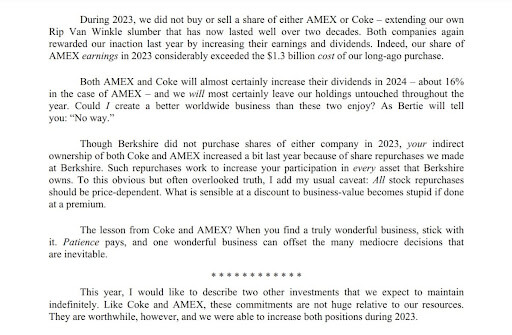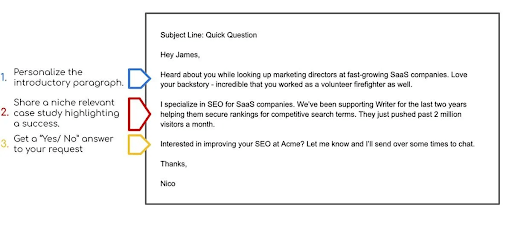The Art of Sales Communication: Techniques to Win Clients

Contents
I used to struggle to close clients for my SEO agency. I had the technical expertise and a proven track record, but potential clients slipped through my hands. One particular instance stands out: a major SaaS company was interested in our services.
Despite multiple meetings and a detailed proposal, they chose a competitor.
Sound familiar?
Rather than blame the prospect, I focused on improving my sales communication. Along this journey, I read dozens of books, spent too much time on YouTube, listened to hours of podcasts, and learned through trial and error.
Here are some of the sales communications lessons I discovered the hard way.
The Key Elements of Sales Communication
Sales communication is about clearly sharing information about your product or service with potential clients. It involves listening to their needs, explaining benefits, and building trust to help close sales.
Good sales communication comes from an understanding of psychology, some key principles, and a lot of practice.
Let’s start at the beginning.
Master the Art of Active Listening
One of the best things you can do in a meeting is shut up and let the other person talk.
Active listening is crucial in sales communication. It involves fully concentrating, understanding, and responding to the other person. You need to gather relevant information to do this.
Studying interview techniques teaches you a lot about active listening.
The CIA uses various active listening techniques in its training. One of these is the “Doors and Windows” technique. This method involves:
- Doors: Ask open-ended questions that encourage the speaker to provide detailed information. These questions are like doors that open up more conversation.
- Windows: Observing non-verbal cues and body language. These cues act as windows, offering insights into the speaker’s true feelings and thoughts.
The idea is to ask questions that help you better understand the other person’s desires.
It’s also good to just let the other person talk. People like the opportunity to unload.
Other active listening techniques you should master include:
- Paraphrasing: Repeating what the speaker has said in your own words. This shows that you understand their message and helps clarify any misunderstandings.
- Summarizing: Offering a summary of the main points. This helps ensure both parties are on the same page.
- Clarifying Questions: Ask questions to clarify any ambiguities. This demonstrates that you are engaged and committed to fully understanding the speaker.
- Empathizing: Showing empathy through verbal affirmations and body language. This builds rapport and makes the speaker feel valued.
A good sales meeting involves talking as little as possible for the first half to two-thirds of the meeting. Your goal is to ask questions and understand the needs of the person sitting on the other side of the table.
You also need to know what they hope to achieve by using your service or purchasing your product and their motivations. This information helps you pitch better.
Learn How to Communicate Clearly & Concisely
Speaking clearly and concisely is an essential skill in effective communication, especially in sales. It ensures that your message is understood and keeps the listener engaged.
It’s easy to start using the latest buzzwords and industry terms. You shouldn’t. Ensure your content, both written and oral, is easy to understand. Take Berkshire Hathaway as an example.
Investing is a tricky topic. Yet Warren Buffett’s annual shareholder letters are known for their clarity and accessibility. The average reading age of these letters is estimated to be around the 8th-grade level.
Here is an excerpt from his 2023 letter.

It wasn’t always this way. The first annual newsletters he produced were much harder to read.
Buffett’s approach is deliberate. He wants anyone, including people without advanced financial or business backgrounds, to understand what he’s talking about. This readability is part of what makes his letters so valuable to both novice and experienced investors.
You should take this same approach to communication.
Ensure you communicate clearly and concisely regardless of the medium. You need to keep this in mind when pitching a large company. There are generally so many people in the decision-making process, and people have different expertise.
Here are some things to master:
- Start with a clear objective. Know what you want to convey and why.
- Plan your message before you speak or write. A clear structure helps in delivering a coherent message.
- Choose words that are easy to understand. Avoid using complex vocabulary, technical jargon, and buzzwords.
- Get to the point quickly. Avoid unnecessary details that can confuse the main message.
- Summarize the key points at the end to ensure they are remembered.
Another handy communication technique I picked up was from McKinsey.
The McKinsey presentation framework starts with an executive summary. This summary gives a quick overview of the key points and conclusions. It’s meant to help busy executives understand the main message fast.
After the summary, the presentation goes into more detail. This part includes data, analysis, and insights that support the main points. The framework ensures the audience understands the big picture first and then sees the evidence behind it.
I always begin with the key facts and outline what I’ll cover in sales meetings.
I then summarize the action points at the end of the talk.
Finally, you need to position yourself as an expert. That means being able to answer most questions immediately and provide handy insights.
Don’t Forget Non-Verbal Communication
Non-verbal communication is just as important as what you say. It includes body language, facial expressions, gestures, and eye contact. These elements can reinforce your message and make your communication more effective.
There are obvious things to keep in mind. For example:
- Maintain Eye Contact: Shows confidence and engagement.
- Use Good Posture: Sit up straight and lean in to show interest.
Then there’s the less obvious stuff.
For example, my Dad taught me to clasp both hands together on the table in a meeting and look at the person talking. This makes you look like you’re paying attention to every detail about what’s going on, even if you’re just wondering what’s for dinner tonight.
One of the hardest nonverbal communication skills to master is mirroring.
When you imitate a person’s gestures and body language, you create a sense of familiarity and trust. This makes the other person feel understood and comfortable.
Mirroring also makes you more observant. You pay attention to the other person’s emotions and unspoken messages. Mastering the art of mirroring gives you that little edge and helps you come across as more likable and persuasive. That is valuable in both personal and professional settings.
The Best Sales Communication Channels
Choosing the best sales communication channels is key to connecting with potential customers. Effective channels help you reach your audience in the most impactful way. It’s important to select methods that match your customers’ preferences and behaviors. Good communication channels improve engagement, build trust, and drive sales.
Cold Calling
Cold calling remains one of the best sales channels. In fact, 27% of sales teams consider the phone the best single channel to book meetings.
This makes sense. Phone calls offer a personal touch, making it easier to build trust and rapport with potential customers. Unlike email, it’s hard to ignore someone when you’re on the other end of a call. Plus, you can address questions and objections in real-time.
VoIP phone services enhance traditional phone calls by offering more flexibility and features. With VoIP, sales teams can make calls from anywhere with an internet connection. This is perfect for remote work.
Features like call recording, analytics, and integration with CRM systems streamline the sales process and provide valuable insights into customer interactions.
SMS is a powerful sales tool with high open rates. Use SMS for appointment confirmations, reminders, and follow-ups. It’s a simple way to engage someone and complements phone calls and other channels.
Cold Email Outreach
Cold email outreach is a crucial strategy for reaching potential customers. It allows you to introduce your products or services to a broad audience. The clear advantage of cold email outreach is its scalability.
You can send dozens of emails daily. Tools and software can help automate the process. For example, you can use an instant data scraper or an email finder to collect email addresses. Then you can use a tool like Mailshake to track open rates, and manage responses.
Automation ensures follow-ups are timely and consistent.
Start with a compelling subject line to grab attention. A great subject line will look like it was sent by a friend or colleague. Something like “Quick question” is a simple winner.
Here’s a quick example of a cold outreach email I usually send in a 4-part email series.

I often use emojis in a subject line to make it stand out in the inbox.
Always personalize the main copy of your email. Get specific to show you’ve taken time researching the email. Keep the message concise and to the point, highlighting the value you offer.
Finally, end with a CTA. If you’re unhappy with the copy, use a tool like the Axios HQ sentence rewriter to rephrase your content.
Face to Face Meetings
Of course, the best sales communication channel is a face-to-face meeting. Sitting directly opposite someone allows you to build a personal connection quickly.
Spend time getting to know the person. Discover their interests and hobbies. After all, the best business relationships are underpinned by strong friendships.
In-person meetings also provide an opportunity to read the room and adjust your pitch accordingly. You can gauge reactions and tailor your message on the spot, addressing concerns immediately and effectively. This dynamic interaction fosters a more engaging and responsive conversation.
Additionally, face-to-face meetings help to create a memorable impression.
The physical presence and effort to meet in person demonstrate commitment and seriousness about the partnership. Particularly when the other person is based somewhere far away. Showing that willingness to travel leads to stronger bonds and long-term business relationships.
Social Media
I’m not active on social media. It’s not my thing. So, my advice is pretty generic here. But…
Social media platforms like LinkedIn and Twitter are essential for professional sales communication. LinkedIn is effective for B2B sales, allowing direct connections with decision-makers and industry professionals.
Try to develop a relationship before you pitch. Engaging in discussions can lead to meaningful conversations and potential leads.
You can also use social media for positioning. Work on building up a reputation as an industry expert. It will pay off as you start to get inbound leads.
Twitter, well, X, is great for staying updated with industry trends and participating in real-time conversations. Following influencers, joining hashtags, and sharing insights will help showcase your expertise.
Sales Communication Strategies
Successful sales communication involves many elements. Mastering key strategies is essential for success. Below are two critical strategies that I believe are vital to focus on.
Master the Art of Storytelling
Becoming a better storyteller can significantly enhance your sales communication. Stories help your audience remember the information you share.
There are some best practices for storytelling to follow if you want to improve your skills.
For instance, great stories follow a structured narrative. The three-act structure, commonly used in movies and stories, can be used in sales communication. This structure includes a strong beginning to hook your audience, a middle to develop your solution, and a satisfying conclusion.
The three-act structure keeps your communication clear and engaging. For instance, start with a relatable problem, build up with how your product or service addresses this issue, and conclude with the positive impact it has on customers.
Another thing you can try is studying comedians. After all, great comedians are masters of getting and keeping the attention of an audience. Seeing what works on formats like TedX will also provide handy inspiration.
Finally, you need to practice.
A lot.
You might suck at it first, but you’ll get better through continuous practice.
Remember to Follow Up
It can take months, sometimes even years, to go from communicating with a prospect to turning them into a client. Following up effectively during this time is key to closing the prospect.
Moreover, follow-ups allow you to address any questions or concerns the prospect might have. By reaching out proactively, you can clarify doubts and provide additional information. This helps overcome objections and demonstrates your commitment to customer satisfaction.
Consider the following when deciding when to follow up:
- After Initial Contact: Follow up within 24-48 hours after the first meeting or call. This keeps the momentum going and shows you are prompt and attentive.
- After Sending Information: If you’ve sent an email or a proposal, follow up within 2-3 days to ensure they received it and to answer any questions they might have.
- After a Proposal or Quote: Follow up a week after sending a proposal or quote. This gives the prospect time to review the information and keeps you on their radar.
- Post-Meeting: Send a follow-up email within 24 hours after a meeting, summarizing the discussion, outlining the next steps, and thanking them for their time.
- Regular Check-Ins: Schedule regular check-ins every few weeks or months if a prospect isn’t ready to buy yet. This keeps the relationship warm, and shows continued interest in their needs.
Consistent follow-up is a clear indicator of excellent customer service. A strong follow-up strategy can transform prospects into loyal clients, driving long-term business growth.
Sales Communication KPIs
It’s hard to benchmark and track the effectiveness of your sales communication. You should try, though. Especially if you’re part of a large team.
Key Performance Indicators (KPIs) provide quantifiable metrics that help you understand how well your sales tactics are working and where there is room for improvement. By focusing on specific KPIs, you can gain insights into customer interactions, the efficiency of your sales team, and overall sales performance.
Here are five potential sales communication KPIs to consider:
- Response Time: The average time to respond to customer inquiries or leads.
- Conversion Rate: The percentage of leads that convert into paying customers.
- Customer Satisfaction Score (CSAT): A measure of customer satisfaction with communication and overall service.
- Email Open Rate: The percentage of recipients who open your sales emails.
- Call Success Rate: The percentage of sales calls that result in a successful outcome, such as a scheduled meeting or sale.
Monitoring these KPIs allows you to make data-driven decisions to enhance your sales communication efforts. Reviewing these metrics also ensures you stay aligned with your sales goals and continuously improve your strategies to drive better results.
Summing Up
So, that wraps up this piece on sales communication. To summarize:
Why it matters: Effective sales communication can make or break your ability to close deals.
The bottom line: Master active listening, communicate clearly and concisely, and always follow up. These skills will significantly improve your sales outcomes.
What’s next: Practice these strategies consistently and refine your approach based on feedback. You’ll see a noticeable improvement in client conversions.





